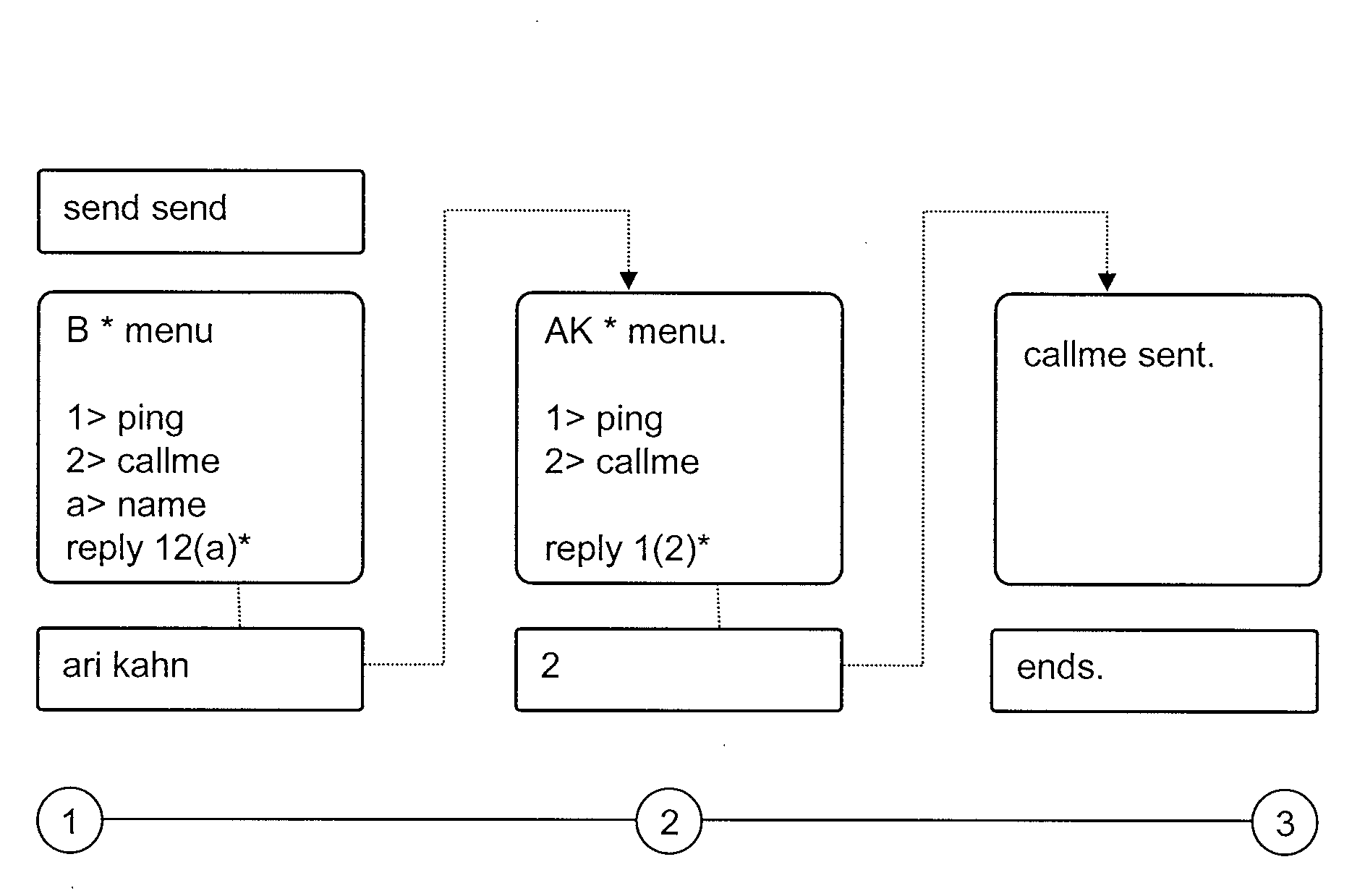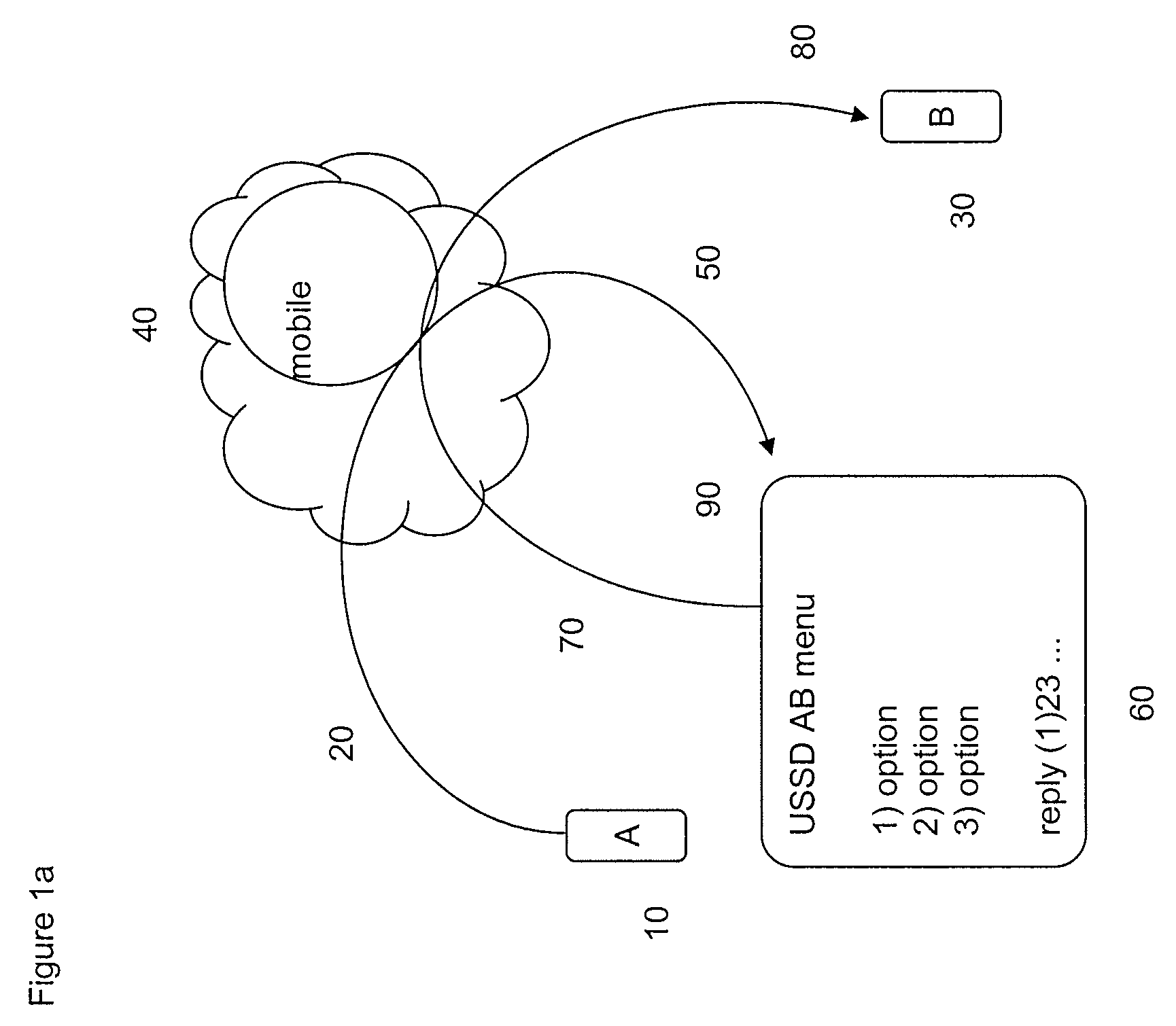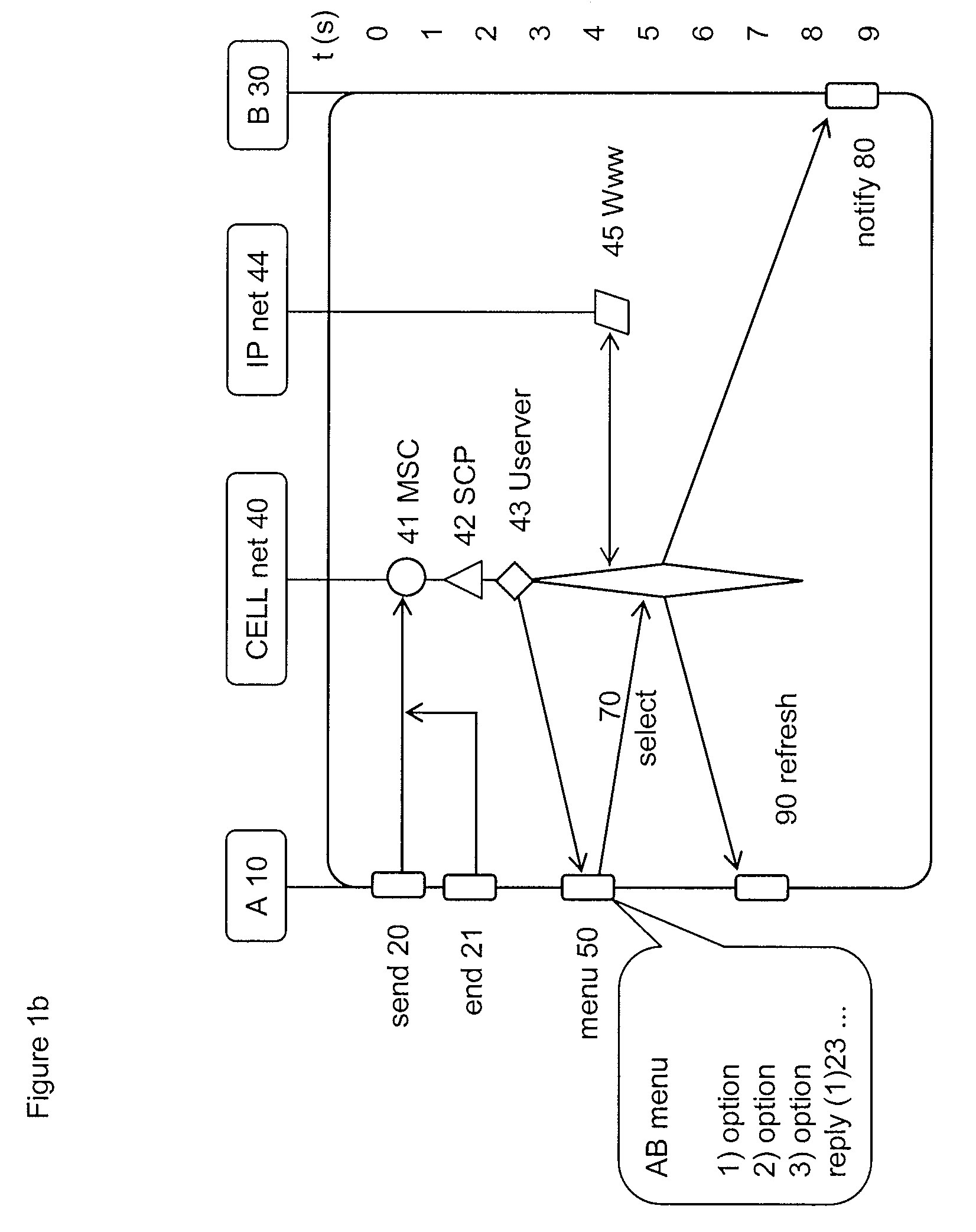Mobile Communications Facilitated by Interactive Menus
a mobile communication and menu technology, applied in special services for subscribers, substation equipment, electrical equipment, etc., can solve the problems of unidirectional static and static ussd services, photographic memory, and simple impracticality for all intents and purposes
- Summary
- Abstract
- Description
- Claims
- Application Information
AI Technical Summary
Benefits of technology
Problems solved by technology
Method used
Image
Examples
Embodiment Construction
[0032]Referring now to FIG. 1a, an example mobile communication environment is shown that includes a plurality of mobile users (i.e., devices) 10 and 30 coupled by a mobile communication network (e.g., servicing mobile network 40). Servicing mobile network 40 includes a USSD application server (not shown) that hosts a USSD application (also not shown).
[0033]In operation, mobile user 10 requests a teleservice 20 (e.g., dials a number, sends an SMS, sends a ping) addressed to mobile user 30 and sends the request to the servicing mobile network 40. On receiving the request, and in concert with conventional switching and routing of the teleservice towards the destination mobile user 30, the servicing mobile network 40 spawns a USSD session 50, displayed in enlarged view, back to the originating mobile user 10, listing service options 60 automatically associated with one or both of mobile user 10 and 30. Caller (the “user” of mobile user 10) may at this stage choose to dismiss the menu, ...
PUM
 Login to View More
Login to View More Abstract
Description
Claims
Application Information
 Login to View More
Login to View More - R&D
- Intellectual Property
- Life Sciences
- Materials
- Tech Scout
- Unparalleled Data Quality
- Higher Quality Content
- 60% Fewer Hallucinations
Browse by: Latest US Patents, China's latest patents, Technical Efficacy Thesaurus, Application Domain, Technology Topic, Popular Technical Reports.
© 2025 PatSnap. All rights reserved.Legal|Privacy policy|Modern Slavery Act Transparency Statement|Sitemap|About US| Contact US: help@patsnap.com



